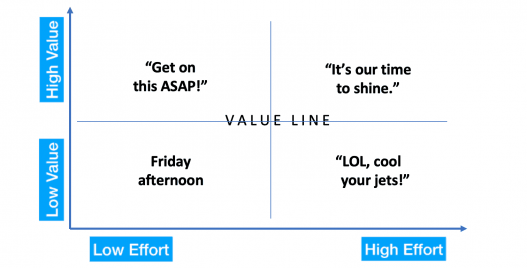Companies like British Petroleum have firsthand experience with the breathtaking cost that comes from “inadequate knowledge sharing” which totaled billions of dollars in subsequent claims for them. In 2010, when their oil rig exploded, it took BP 5 days to notice the leak; pouring almost 900,000 liters of oil into the ocean. After demanding an investigation into the cause of the incident, the US Congress was stunned to learn the answer: an employee with “specialized knowledge” left BP and simply wasn’t replaced. This oversight cost the company approximately $62 billion. Yikes!
Most businesses aren’t on the same scale as BP, however, knowledge retention is still an expensive component of their bottom line. Approximate turnover costs can be calculated as such: 50% of the salary for an entry-level position, 125% for mid-level, and over 200% for senior executives.
This situation has become more urgent as we’re currently in the throes of the biggest workplace demographic shift ever. From 2005–2026, every 18 seconds a baby boomer will hit retirement age, with the peak resulting in a void of approximately 19% of the US workforce. Considering how many baby boomers hold senior positions with decades of specific experience, this knowledge capital must be identified and captured in company succession planning, workflow processes, mentoring and more.
The Crest of the Tidal Wave
Many companies struggle to define the parameters of institutional knowledge because it’s both tacit and explicit. Dorothy Leonard, a Harvard Business School professor offers the perfect definition: “stuff in your head that’s never been written down, never been documented. Maybe you’ve never articulated it.” As BP can attest, employee knowledge retention is crucial to maintaining business practices.
According to Gallup, each year a trillion dollars is collectively lost to voluntary employee turnover in the US. To add context, this means “a 100-person organization that provides an average salary of $50,000 could have turnover and replacement costs of approximately $660,000 to $2.6 million per year.” Many businesses fail to recognize the true cost of employee attrition extends far beyond the balance sheet and deeply affects intangibles like team morale, sales relationships, and even innovation, among others. While the loss from employee turnover is very real, thankfully, so are the solutions.
Knowledge Retention and the Corporate Memory
Corporate Memory maintains the capabilities of a diverse, modern workforce by identifying and quantifying information to avoid knowledge loss. It captures the intangible, environment-specific process knowledge residing in an employee’s head, and retains it in perpetuity in the organizational corporate memory. WorkDone’s expertise capture technology observes each employee’s unique activity and collectively determines the most efficient process to implement across all systems. This offsets knowledge loss from employee attrition through capturing knowledge worker expertise and distilling out operational best practices. Capturing these nuances saves business relationships, technical knowledge and offers a competitive edge.
Thanks to the capabilities of WorkDone’s expertise capture technology, human resources are freed up to focus on “high value” tasks above the “effort line,” as depicted in the graphic at the top of this article. With WorkDone, employee turnover no longer needs to be a costly liability for companies with senior employees, short-term staff, complex systems or outdated and undocumented processes.




